Ansible Gathering Facts Unreachable
Importance of Gathering Facts in Ansible
Gathering facts in Ansible is essential as it provides valuable information about the target hosts that are being managed. These facts include system details such as the operating system, hardware specifications, IP addresses, and even custom facts that can be defined by users. Having access to this information allows Ansible to make informed decisions and execute tasks accordingly.
Understanding Ansible Facts and Facts Gathering Process
Ansible facts are variables that hold system information from the remote hosts. These facts are collected using the “gather_facts” feature, which is enabled by default. When a playbook is executed, Ansible connects to the remote hosts and retrieves facts using various methods, such as parsing “etc/os-release” for the operating system details or executing commands to retrieve specific information.
Common Issues with Gathering Facts in Ansible
Despite its usefulness, gathering facts in Ansible can sometimes run into issues, making them unreachable. There are several potential causes behind this problem:
1. Network Connectivity and SSH Access: If the target host is not reachable from the Ansible control machine, the gathering facts process will fail. This can be due to network issues, firewall restrictions, or incorrect SSH access configuration.
2. Ansible Hosts Configuration: Improper configuration of the target hosts in the Ansible inventory file can result in gathering facts being unreachable. Incorrect IP addresses, hostnames, or syntax errors in the inventory file will prevent Ansible from establishing a connection and gathering facts.
3. Improper Inventory File Setup: Ansible relies on the inventory file to determine the target hosts for gathering facts. If the inventory file is not properly formatted or lacks the necessary information, it can cause issues with facts gathering.
4. SSH Key Authentication Issues: Gathering facts in Ansible requires SSH access to the remote hosts. If there are problems with SSH key authentication, such as incorrect permissions or missing keys, it will result in the gathering facts process being unreachable.
Using the Ansible Debug Module for Troubleshooting
When faced with unreachable gathering facts in Ansible, the Debug module can be a useful tool for troubleshooting. By including the Debug module in the playbook, you can print out specific variables or facts to help identify the source of the issue. This can be done by adding a task to the playbook that uses the Debug module and specifies the variable or fact to be printed.
Checking Network Connectivity and SSH Access
To ensure that network connectivity and SSH access are not preventing the gathering facts process, you can perform some basic checks. First, verify that the target host is accessible from the Ansible control machine using tools like Ping or SSH. If there are connectivity issues, you may need to troubleshoot and resolve them before retrying the gathering facts process.
Verifying Ansible Hosts Configuration
Check the Ansible inventory file to verify that the target hosts are correctly defined. Ensure that the IP addresses or hostnames are accurate and correspond to the actual remote hosts. Additionally, double-check for any syntax errors or missing information in the inventory file.
Ensuring Proper Inventory File Setup
Ansible relies on the inventory file to gather facts and execute tasks. Make sure that the inventory file is properly formatted and structured. It should contain the necessary information, such as the IP addresses or hostnames of the target hosts. Also, ensure that the inventory file is accessible from the Ansible control machine and located in a known location.
Troubleshooting SSH Key Authentication Issues
If there are problems with SSH key authentication, such as incorrect permissions or missing keys, it can cause the gathering facts process to be unreachable. Check the SSH key configuration and make sure that the correct keys are present and have the proper permissions. Additionally, verify that the SSH key used for authentication matches the one configured on the target hosts.
Other Potential Causes of Unreachable Gathering Facts
While the aforementioned issues are common causes of unreachable gathering facts in Ansible, there can be other factors as well. For example, if the remote host is experiencing high load or resource constraints, it may not be able to respond to the gathering facts requests. It can also be caused by issues with the remote host’s operating system or the version of Ansible being used.
FAQs
Q: What is skip gathering facts in Ansible?
A: Skip gathering facts in Ansible is a configuration option that allows you to disable the gathering of facts for specific hosts or playbooks. This can be useful in situations where gathering facts is not required or if you want to improve playbook performance.
Q: How can I retry gathering facts in Ansible?
A: Ansible provides the option to retry gathering facts for unreachable hosts. By specifying the “ansible_gather_facts_retry_timeout” variable, you can set the maximum time to wait for the host to become reachable again and gather facts.
Q: Why is Ansible stuck on gathering facts?
A: Ansible may be stuck on gathering facts due to network connectivity issues, incorrect SSH access configuration, or other factors preventing it from connecting to the remote hosts. It is important to troubleshoot the underlying issue to resolve the problem.
Q: How do I gather facts only for the hostname in Ansible?
A: By default, Ansible gathers facts for all hosts defined in the inventory file. If you want to gather facts only for a specific hostname, you can use the “limit” option when running the playbook. For example, “ansible-playbook playbook.yml –limit myhostname”.
In conclusion, gathering facts in Ansible is an important process that provides valuable information about the remote hosts being managed. However, there can be instances where gathering facts becomes unreachable, leading to potential issues. By understanding the common causes of unreachable gathering facts and using troubleshooting techniques, you can ensure a successful facts gathering process in Ansible.
Ansible – Solution Unreachable Error
Is There A Way To Get Ansible To Identify Target Hosts That Are Unreachable Dead?
Ansible, a powerful open-source automation tool, allows system administrators to manage and configure multiple machines simultaneously. One of the key features of Ansible is its ability to connect to remote hosts and execute tasks. However, there may be instances when target hosts become unreachable, either due to network issues, server downtime, or other reasons. In such cases, it becomes crucial for system administrators to identify these dead hosts and take appropriate action. Here, we will explore various ways to get Ansible to identify target hosts that are unreachable or dead, providing solutions and insights to help you streamline your Ansible operations.
1. Utilizing Ansible’s built-in error handling mechanisms:
Ansible provides several error handling mechanisms that can be used to identify unreachable hosts. One such mechanism is the `–limit` option, which allows you to limit the execution of tasks to a specific set of hosts. By specifying a range of hosts or target groups, you can identify which hosts are unreachable by monitoring the output for failed connections or errors.
2. Using Ansible’s ping module:
The `ansible_ping` module is a simple and effective way to check the reachability of hosts. By running the command `ansible all -m ping`, Ansible sends a ping message to each target host. If a host is unreachable, Ansible will report the failure, allowing you to identify the dead hosts.
3. Writing a custom playbook:
Another approach to identify dead hosts in Ansible is to write a custom playbook. By leveraging Ansible’s capabilities, you can create a playbook that performs a series of connectivity tests to each target host. For example, you can use the `wait_for_connection` module to check if a host is reachable before proceeding with further tasks. By monitoring the output of this playbook, you can easily identify hosts that are unreachable or dead.
4. Monitoring tools integration:
Integrating Ansible with monitoring tools can provide real-time alerts and notifications when a host becomes unreachable. Tools like Nagios, Zabbix, or Prometheus can be configured to monitor the availability of hosts and send alerts to Ansible when a host goes down. By leveraging the power of monitoring tools, you can proactively identify and take action on dead hosts.
5. Ansible Tower:
If you are using Ansible Tower, an enterprise version of Ansible, you have additional features at your disposal to monitor and manage unreachable hosts. Ansible Tower provides a comprehensive dashboard that displays the health status of your target hosts, allowing you to quickly identify dead or unreachable hosts. You can also set up job templates with custom notifications to receive alerts when hosts become unreachable.
Frequently Asked Questions (FAQs):
Q1: How can I exclude unreachable hosts from playbook executions?
A1: You can exclude unreachable hosts by specifying the `–limit` option followed by the list of reachable hosts. For example, you can use `ansible-playbook playbook.yml –limit ‘!unreachable’` to exclude unreachable hosts.
Q2: Can Ansible automatically retry connecting to unreachable hosts?
A2: Yes, Ansible can automatically retry connecting to unreachable hosts by configuring the `max_retries` and `retry_interval` parameters in the Ansible configuration file. This allows Ansible to continuously attempt to connect to the unreachable hosts until they become reachable.
Q3: Is there a way to schedule regular checks for unreachable hosts in Ansible?
A3: Yes, you can schedule regular checks for unreachable hosts by using cron jobs or task schedulers. By creating a script that utilizes the ping module or other connectivity checks, you can run it periodically to identify any dead or unreachable hosts in your environment.
Q4: Can Ansible trigger notifications when a host becomes unreachable?
A4: Yes, Ansible can trigger notifications when a host becomes unreachable. By integrating Ansible with monitoring tools like Nagios or Zabbix, you can set up alerting mechanisms that send notifications to administrators or other relevant stakeholders when a host goes down.
Q5: Are there any best practices to follow when dealing with unreachable hosts in Ansible?
A5: Some best practices when dealing with unreachable hosts in Ansible include setting up proper error handling mechanisms, regularly monitoring host availability, using retry configurations to automate reconnection attempts, and implementing proactive logging and notifications for dead hosts.
In conclusion, Ansible provides several built-in functionalities and techniques to help identify target hosts that are unreachable or dead. By leveraging these features, system administrators can streamline their operations, proactively manage network issues, and take appropriate action when necessary. Whether by utilizing error handling mechanisms, writing custom playbooks, integrating with monitoring tools, or leveraging enterprise features offered by Ansible Tower, there are multiple ways to identify and manage unreachable hosts using Ansible.
How To Reduce The Number Of Ssh Connections Required In Ansible?
Ansible is an open-source automation tool that simplifies the management and configuration of systems by using declarative language rather than procedural scripts. It enables system administrators to automate various tasks, such as provisioning, configuration management, application deployment, and orchestration. One of the key features of Ansible is its ability to perform actions on remote systems over SSH (Secure Shell) connections. However, managing a large number of SSH connections can be time-consuming and resource-intensive. In this article, we will explore some techniques to reduce the number of SSH connections required in Ansible, thereby improving efficiency and performance.
1. Utilize SSH key-based authentication:
By default, Ansible uses password-based authentication to establish SSH connections with remote systems. However, this method requires providing the password for each connection, which can be cumbersome and time-consuming. A better approach is to use SSH key-based authentication, where a private key is used to authenticate the connection instead of a password. This eliminates the need to enter the password for each connection, thereby reducing the time and effort required. You can generate an SSH key pair using the ssh-keygen command and distribute the public key to the remote systems for authentication.
2. Configure SSH connection pooling:
SSH connection pooling is a technique that enables multiple SSH sessions to share the same connection, thereby reducing the overhead of establishing a new SSH connection for each task. Ansible provides a feature called “ControlPersist,” which allows reusing SSH connections across multiple tasks. By enabling this feature in your Ansible configuration, you can significantly reduce the number of SSH connections required for a playbook run.
3. Optimize Ansible inventory and groups:
Ansible uses an inventory file to organize and manage the target systems. By carefully structuring your inventory file and grouping similar systems together, you can execute tasks on multiple systems efficiently with a single SSH connection. For example, if you have a group of web servers, you can define them in the inventory file as a group and execute tasks against the group instead of individual systems. This reduces the number of SSH connections required and improves the overall performance of your Ansible playbook.
4. Employ Ansible’s Forks setting:
The Forks setting in Ansible controls the number of parallel processes that can be executed simultaneously. By default, Ansible has a Forks value of 5, meaning it can execute up to five tasks in parallel. However, you can adjust this value based on the resources available on your control node. Increasing the Forks value allows Ansible to execute more tasks concurrently, thus reducing the number of SSH connections required sequentially.
5. Consider Ansible’s Serial setting:
In some cases, executing tasks on all target systems simultaneously may overwhelm the control node or the remote systems. Ansible’s Serial setting allows you to control the number of systems that can be processed at once. By specifying a lower value, such as 25%, only a subset of systems will be processed concurrently, reducing the number of SSH connections required. This is particularly useful when managing large-scale deployments where simultaneous connections can cause resource constraints.
FAQs:
Q: Can I use SSH agent forwarding with Ansible?
A: Yes, Ansible supports SSH agent forwarding. By enabling SSH agent forwarding, you can use the SSH credentials from your local machine to authenticate connections with remote systems. This eliminates the need to store SSH keys on the control node and simplifies the authentication process.
Q: How can I configure ControlPersist in Ansible?
A: ControlPersist can be configured in the ansible.cfg file, which is located in the Ansible configuration directory. You can set the ControlPersist option to a time value, such as “30s” or “5m,” to specify the duration for which an SSH connection should be kept open. Make sure to uncomment the ControlPersist line in the file and adjust the value according to your requirements.
Q: Are there any trade-offs associated with reducing SSH connections in Ansible?
A: While reducing the number of SSH connections can improve performance and efficiency, it is essential to consider the trade-offs. Fewer SSH connections mean more tasks are sharing the same connection, which can lead to potential delays if one task hangs or requires more time. Additionally, it is crucial to evaluate resource constraints on the control node and remote systems to ensure they can handle the increased workload.
In conclusion, optimizing SSH connections in Ansible can significantly enhance performance and efficiency during playbook runs. By utilizing SSH key-based authentication, configuring connection pooling, organizing inventory effectively, and adjusting Forks and Serial settings, you can reduce the number of SSH connections required and streamline the execution of tasks. Understanding the trade-offs and carefully evaluating your infrastructure will help you strike the right balance between simultaneous connections and resource constraints, ensuring a smooth and efficient automation workflow with Ansible.
Keywords searched by users: ansible gathering facts unreachable Skip gathering facts Ansible, ansible gather facts retry, ansible unreachable timeout, ansible stuck on gathering facts, ansible retry unreachable, ansible gather timeout, Ansible gather facts only hostname, ansible unreachable changed”: false
Categories: Top 95 Ansible Gathering Facts Unreachable
See more here: nhanvietluanvan.com
Skip Gathering Facts Ansible
Introduction:
In the world of IT automation, Ansible has emerged as a powerful open-source tool that simplifies repetitive tasks, configuration management, and application deployment. Ansible offers a unique approach known as “Skip gathering facts,” providing users with greater efficiency and flexibility when automating their infrastructure. In this article, we will explore the concept of Skip gathering facts in depth, discussing its benefits, implementation, and addressing common FAQs for a comprehensive understanding.
Understanding Facts in Ansible:
Before delving into Skip gathering facts, it’s important to understand the concept of facts in Ansible. Facts, in Ansible terms, refer to variables containing information about the target hosts, such as network interfaces, system hardware, operating system details, and more. Ansible gathers these facts by default before executing any tasks, allowing users to access and leverage this information during their playbooks.
However, facts collection can be a time-consuming process, especially in large-scale environments or scenarios where users require rapid execution. This is where Skip gathering facts comes into play, offering users the flexibility to skip the default facts gathering step, resulting in faster execution.
Benefits of Skip gathering facts:
1. Improved Speed and Efficiency:
By skipping facts gathering, Ansible significantly reduces the overall execution time of playbooks. This is particularly beneficial in scenarios where the gathered facts are unnecessary or can be obtained through other means. Skipping facts gathering allows users to focus solely on the tasks they want to perform, leading to faster automation and improved efficiency.
2. Increased Flexibility:
Not all automation tasks require extensive facts collection. In many cases, users may have prior knowledge or alternate means to acquire the required information. By skipping facts gathering, users gain the freedom to choose when to collect facts and when to utilize pre-existing knowledge, enabling greater flexibility in playbook design and execution.
3. Reduced Network Load:
In certain environments, facts gathering might involve pulling large amounts of data from multiple hosts simultaneously. This can lead to significant network congestion and impacts the overall performance of the infrastructure. By skipping facts gathering, users can alleviate unnecessary network load and streamline their automation processes.
Implementing Skip gathering facts:
To implement Skip gathering facts in Ansible, users need to specify the appropriate option in the playbooks or inventory files. There are multiple ways to achieve this:
1. Inline: Users can add the “gather_facts: False” line at the top of each playbook where facts gathering is to be skipped.
2. Host-based: The “gather_facts: False” option can be added specifically for individual hosts or groups in the inventory file, allowing for a more granular approach.
3. Group-based: Users can assign the “gather_facts: False” option to groups in the inventory file, affecting multiple managed hosts at once.
FAQs:
Q1. Will skipping facts gathering impact the execution of my playbooks?
Ans: Skipping facts gathering will not impact the execution of your playbooks, as long as your tasks do not depend on any gathered facts. However, it is crucial to ensure that any required facts are acquired through alternative means or gathered explicitly before executing relevant tasks.
Q2. Are there any downsides to skipping facts gathering?
Ans: Skipping facts gathering can limit access to valuable information that might be required for certain tasks. It is essential to assess the requirements of each playbook and determine whether skipping facts gathering is appropriate. Additionally, it’s worth noting that skipping facts gathering might result in reduced visibility into host configurations, potentially impacting troubleshooting or auditing processes.
Q3. How can I access facts if I skip gathering them?
Ans: Users can still access facts by utilizing pre-existing knowledge or by gathering them explicitly before execution. Ansible provides various modules and lookup plugins to retrieve specific facts related to hosts or environments.
Q4. Can I selectively skip facts gathering for specific tasks?
Ans: Yes, it is possible to selectively skip facts gathering for specific tasks within a playbook. By setting the “gather_facts” option to False for specific tasks, users can bypass facts gathering only when it is not required, while still benefiting from gathered facts when needed.
Conclusion:
Skip gathering facts in Ansible offers users the ability to streamline their automation processes, reduce execution time, and improve overall efficiency. By allowing greater flexibility in playbook design, users can choose when to leverage pre-existing knowledge or gather facts explicitly. However, it is vital to assess the requirements of each playbook and determine whether facts gathering should be skipped or not. With the implementation of Skip gathering facts, Ansible continues to provide automation enthusiasts with an intelligent configuration management tool that simplifies IT operations.
Ansible Gather Facts Retry
The Importance of Gathering Facts
Before we dive into Ansible gather facts retry, let’s briefly discuss why gathering facts is crucial in the first place. When performing various automation tasks, it is essential to have accurate information about the target systems to make informed decisions. Facts collected by Ansible include details about the system’s operating system, uptime, IP address, CPU, memory, disks, and more. These facts act as variables that can be used in playbooks to customize system configurations or execute specific tasks based on the system’s characteristics.
Understanding Ansible Gather Facts Retry
Gathering system facts is a fundamental part of Ansible’s workflow. However, it is possible for these facts to fail, resulting in incomplete or inaccurate information. To address this issue, Ansible introduced the “gather_facts_retry” feature, which is available from version 2.9 and above. This feature enables Ansible to automatically retry the fact-gathering process when it encounters a failure, ensuring that accurate and up-to-date information is obtained.
Benefits of Ansible Gather Facts Retry
Ansible’s gather facts retry capability offers several benefits, including:
1. Reliable fact gathering: With gather_facts_retry, Ansible automatically retries facts gathering on its own, eliminating the need for manual intervention. This ensures that fact collection is completed reliably and reduces the chances of incomplete or inaccurate information.
2. Improved playbook execution: By ensuring that facts are gathered successfully, gather_facts_retry enhances the overall execution of playbooks. Playbooks can rely on the retrieved facts to make informed decisions and manage systems more effectively.
3. Troubleshooting and debugging: In cases where fact gathering fails due to temporary network issues or other factors, gather_facts_retry allows for easier troubleshooting and debugging. It automatically retries the fact-gathering process, providing a more straightforward path to resolving any issues.
Configuration of Gather Facts Retry
Configuring gather_facts_retry is a straightforward process. The “gather_facts_retry_max_delay” and “gather_facts_retry_delay” parameters control the retry behavior. By default, Ansible retries fact gathering with a backoff delay of 1 second. If the retry fails, the delay increases to 5 seconds, then 10, 30, and finally 60 seconds.
To modify these retry parameters, open the ansible.cfg file, which is typically located in the /etc/ansible/ directory. Look for the “gather_facts_retry_max_delay” and “gather_facts_retry_delay” configurations and adjust the values according to your needs. For example:
“`
gather_facts_retry_max_delay = 120
gather_facts_retry_delay = 10
“`
With the above configuration, Ansible will retry fact gathering with a maximum delay of 120 seconds and a delay of 10 seconds between each retry.
Commonly Asked Questions about Ansible Gather Facts Retry
Q1: How does gather_facts_retry differ from gather_facts_timeout?
Ans: gather_facts_retry and gather_facts_timeout are two separate features in Ansible. While gather_facts_retry deals with retrying the fact-gathering process in case of failure, gather_facts_timeout defines the maximum time Ansible should wait for facts to be gathered before giving up and proceeding with playbook execution.
Q2: Can I disable gather_facts_retry altogether?
Ans: Yes, it is possible to disable gather_facts_retry if it is not needed in your environment. Set the “gather_facts_retry_enabled” parameter to False in the ansible.cfg file to disable this feature.
Q3: How can I troubleshoot gather_facts_retry failures?
Ans: In case of gather_facts_retry failures, there are several steps you can take to troubleshoot the issue. Check the system’s connectivity, DNS resolution, and make sure all necessary dependencies are properly installed. Additionally, checking Ansible logs can provide valuable information about the encountered errors.
In conclusion, Ansible gather facts retry offers an efficient and reliable method to ensure accurate and up-to-date information about target systems. By automatically retrying the fact-gathering process, Ansible improves the overall execution of playbooks and simplifies troubleshooting. Understanding the configuration options and addressing frequently asked questions will help sysadmins make the most out of this powerful feature and enhance their automation workflow.
Ansible Unreachable Timeout
In today’s technology-driven world, automation plays a crucial role in streamlining IT operations. Ansible, an open-source automation tool, has gained immense popularity for its ability to simplify and accelerate various IT tasks. However, like any tool, Ansible is not devoid of issues. One common challenge that users often face is dealing with unreachable hosts. In this article, we will delve into the concept of Ansible unreachable timeout, its importance, and how it can be effectively managed. Additionally, we will address some frequently asked questions to provide a comprehensive understanding of this topic.
Understanding Unreachable Hosts in Ansible:
Before delving into unreachable timeout, it is essential to comprehend what “unreachable hosts” mean in the context of Ansible. In Ansible’s terminology, an unreachable host refers to a target machine that cannot be reached by the Ansible control node during a playbook execution. This could be due to various reasons such as network connectivity issues, firewalls, misconfigurations, or even the target host being down.
Importance of Unreachable Timeout:
By default, Ansible attempts to establish a connection with all hosts defined in a playbook. However, if a host is unreachable, Ansible typically waits for a predetermined period, known as unreachable timeout, before deciding to abandon further attempts and proceed to the next task. Setting an appropriate unreachable timeout is crucial to ensure a playbook’s smooth execution, preventing unnecessary delays or indefinitely hanging executions if a host is genuinely unreachable. It also allows users to handle connectivity issues by defining how long Ansible should wait before moving on.
Configuring Unreachable Timeout:
The unreachable timeout in Ansible can be managed by modifying the `ansible.cfg` file, which is the main Ansible configuration file. The default unreachable timeout value is 10 seconds. However, this can be adjusted according to specific requirements. To accomplish this, follow these steps:
1. Locate the `ansible.cfg` file on the Ansible control node.
2. Open the file in a text editor.
3. Search for the line containing `#ansible_timeout` (without the preceding ‘#’).
4. Uncomment the line by removing the ‘#’ symbol.
5. Modify the value after the equals sign to set the desired unreachable timeout. For example: `ansible_timeout = 30` would set the timeout to 30 seconds.
6. Save the changes and exit the file.
With the new configuration in place, Ansible will now wait for the defined unreachable timeout period before considering a host unreachable.
Frequently Asked Questions (FAQs):
Q1: How can I verify if a host is unreachable in Ansible?
A: Ansible provides an easy way to check the reachability of hosts. Use the `ansible` command with the `-m ping -i inventory_file` options. If a host is reachable, it will respond with a successful ping response. Otherwise, it will display an unreachable message.
Q2: Can I configure a different unreachable timeout for specific hosts?
A: Yes, Ansible allows users to configure different unreachable timeout values for specific hosts by utilizing inventory variables. By defining variables for specific hosts in the inventory file, the unreachable timeout can be customized on a per-host basis.
Q3: Is it possible to override the unreachable timeout setting in a playbook?
A: Yes, it is possible to override the unreachable timeout in a playbook. By explicitly specifying the `ansible_timeout` variable for a task, it can be temporarily adjusted for that specific task. However, this will not change the global unreachable timeout configuration.
Q4: What happens if an Ansible playbook execution reaches the unreachable timeout?
A: If a host remains unreachable even after the specified timeout, Ansible will mark it as “unreachable” and skip further tasks on that host. This allows the playbook execution to continue on reachable hosts without causing indefinite delays.
Q5: How can I troubleshoot unreachable host issues in Ansible?
A: Troubleshooting unreachable host issues can involve various steps, including checking network connectivity, verifying firewall rules, reviewing host configurations, and checking the host’s availability. Additionally, using verbose mode (`-vvv` or `-vvvv`) while running the playbook can provide more detailed information on the connection attempts.
Ansible unreachable timeout is a crucial aspect in managing automation tasks. By properly configuring and adjusting the unreachable timeout setting, users can prevent unnecessary delays and maintain smooth playbook executions. Understanding the concept of unreachable hosts and learning how to troubleshoot connectivity issues will contribute to a more efficient automation process.
Images related to the topic ansible gathering facts unreachable
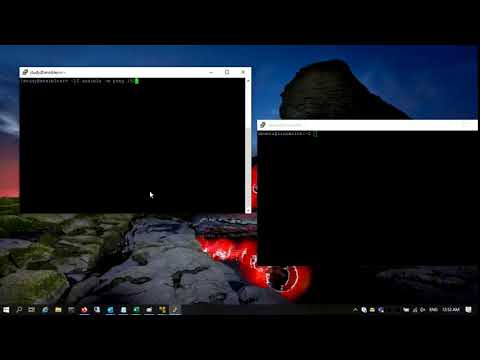
Found 8 images related to ansible gathering facts unreachable theme
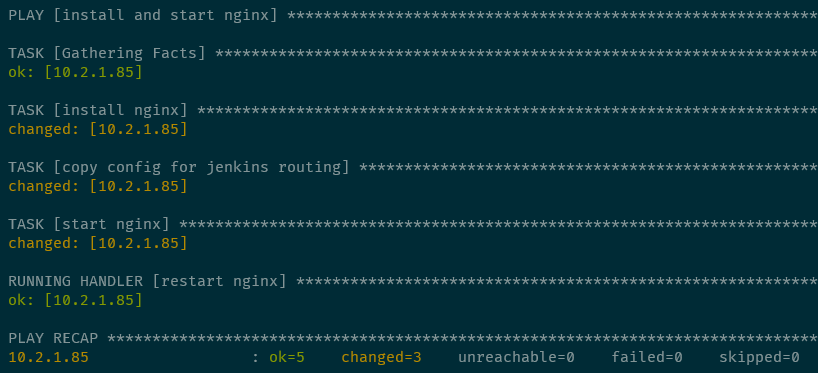






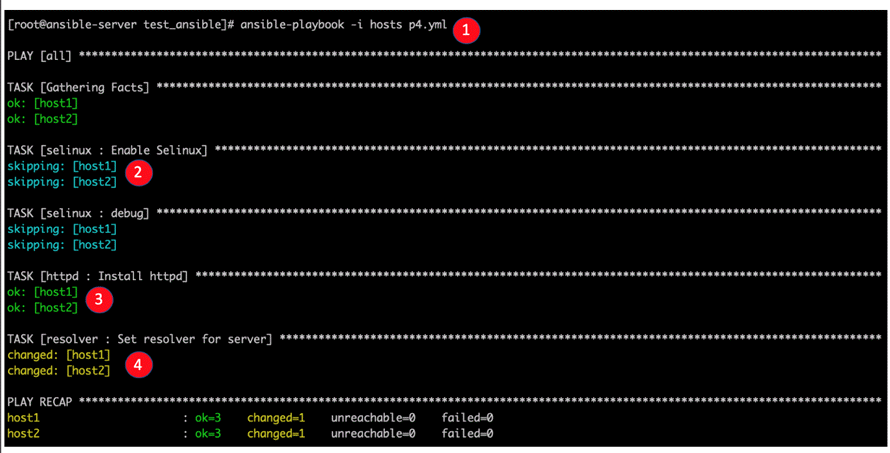
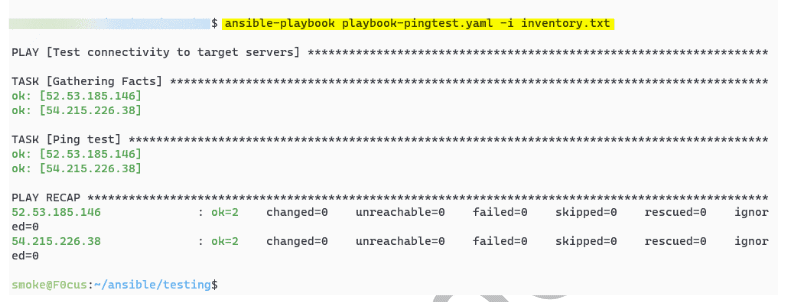
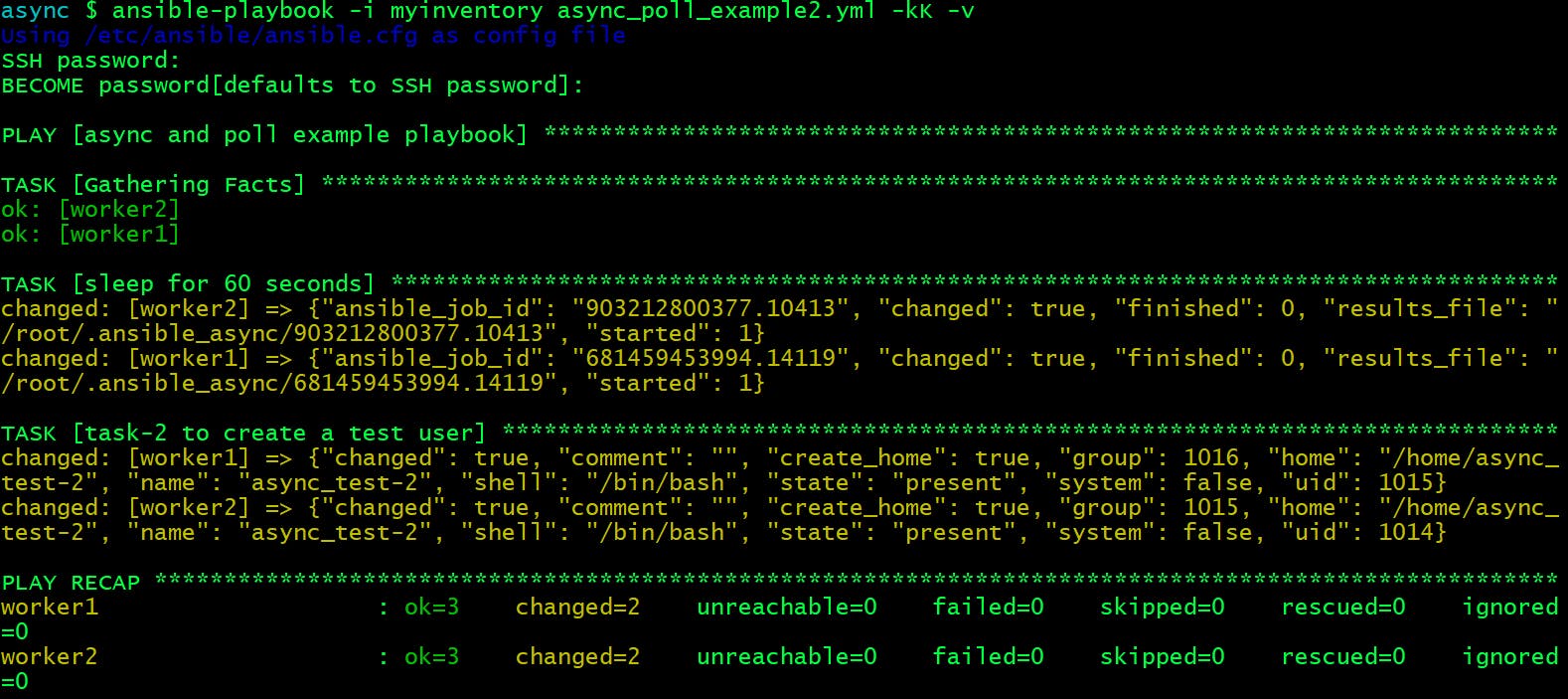



![Ansible] 3. Key concepts trong Ansible - Đỗ Trung Quân Ansible] 3. Key Concepts Trong Ansible - Đỗ Trung Quân](https://dotrungquan.info/wp-content/uploads/2021/12/CleanShot-2021-12-21-at-14.56.56.png)






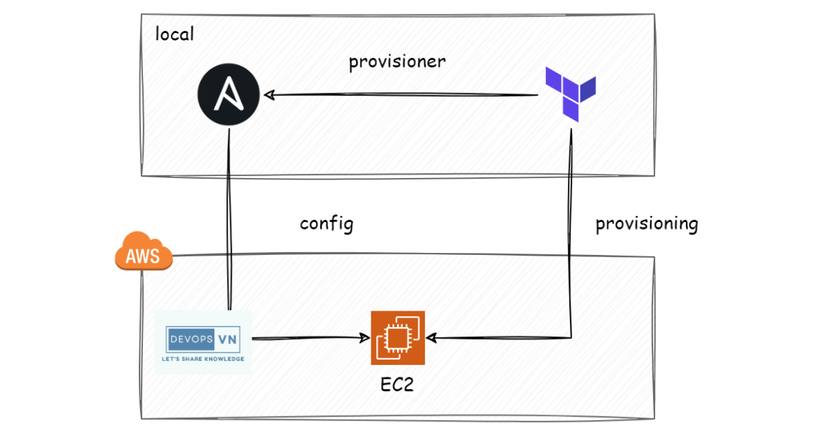

Article link: ansible gathering facts unreachable.
Learn more about the topic ansible gathering facts unreachable.
- ssh – Ansible stuck on gathering facts – Server Fault
- ansible playbook [setup] gather facts – SSH UNREACHABLE …
- Frequently Asked Questions – Ansible Documentation
- 8 ways to speed up your Ansible playbooks | Enable Sysadmin
- Handle exceptions in Ansible Playbooks with block and rescue
- Ansible SSH Key transfer from one host to another – local and remote
- Error handling in playbooks – Ansible Documentation
- Failed to connect to the host via ssh host localhost port 22
- Ansible stuck at gathering facts – Super User
- Ansible troubleshooting — failed to connect to the host via ssh …
See more: nhanvietluanvan.com/luat-hoc